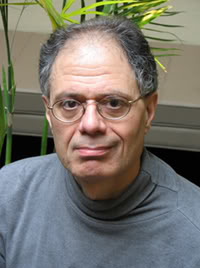The Lightness of Being: Mass, Ether, and the Unification of Forces by Frank Wilczek.
Basic Books, 270 pages, $27.95.
Reinventing Gravity: A Physicist Goes Beyond Einstein by John W. Moffat.
Smithsonian Books/HarperCollins, 272 pages, $27.95.
By George Scialabba
To the reader (and writer) of poetry, Keats recommended "negative capability": the acceptance of "uncertainties, mysteries, doubts, without any irritable reaching after fact and reason." In other words, relax and let your imagination take over. This turns out to be good advice for reading about theoretical physics, too.
Frank Wilczek is a particle physicist and John Moffat is a cosmologist, and so, in a sense, they work at opposite ends of the universe. But they are both on the track of a Grand Unified Theory of Everything, which will harmonize the four basic forces - gravity, electromagnetism, strong nuclear, and weak nuclear - that account for all physical events everywhere.
After Einstein, physicists turned to the interior of the atom. Theory and experiment led to an explosion of new knowledge about the nature and number of subatomic particles. Among the discoveries was that, at a very small scale, precise measurement and predictive certainty are no longer possible, and some events seem to occur spontaneously, without a definite cause. This is the world of quantum mechanics.
The fields that fill space turn out to be quantum fields, which spontaneously, unpredictably fluctuate. These quantum fluctuations are known as virtual particles. Along with virtual particles, space is filled with the residues of invisible interactions among elementary particles such as quarks, bosons, and leptons. The residues, called condensates, are "ethers in something closer to the original spirit of Aristotle and Descartes," Wilczek writes. These ethers "condense spontaneously out of empty space as the morning dew or an all-enveloping mist might condense out of moist, invisible air." Space is not empty after all; "the cosmos is a multilayered, multicolored superconductor," with weight and density. Its name is "Grid."
In case all that sounds a bit daft, this may be the moment to mention that Wilczek, an MIT professor, was recently awarded the Nobel Prize.
In Reinventing Gravity, John Moffat, another very distinguished scientist, comes at the Theory-of-Everything problem by way of astrophysics. As a young man, he corresponded with Einstein about the latter's lifelong effort to generalize his theory of gravity and combine it into a single theory with the other forces. Moffat has been pursuing Einstein's ambition ever since.
The first problem Einstein encountered was internal to his original theory of general relativity. The theory predicted that some stars would develop infinite gravity and density, collapsing inward and becoming "black holes" from which no information could escape. The freakish character of black holes vexed Einstein, who never accepted their existence. The next obstacle was the discovery that many galaxies within galactic clusters are moving at a speed that should lead them to break away from the cluster. But they don't. The only explanation compatible with constant gravitational attraction (which both
Physicists have reluctantly accepted these anomalies for the sake of preserving Einstein's venerable theory of gravity, with its assumption of constant gravitational attraction. But neither black holes nor dark matter has ever been detected. Moffat cuts the Gordian knot, proposing a Modified Gravity Theory, or MOG. He postulates a new "fifth force," carried by a new particle, the "phion." MOG explains the varying strength of gravitational attraction without any need for black holes or dark stars. It also undermines string theory, most physicists' current candidate for a Theory of Everything. Finally, it suggests that the universe did not begin with a Big Bang but may be "eternal" and "dynamically evolving."
It's a bold theory, and Moffat acknowledges that most physicists are skeptical. But data from the new Large Hadron Collider and ongoing galaxy surveys may soon settle the question. Stay tuned.
[END]

Leave a comment